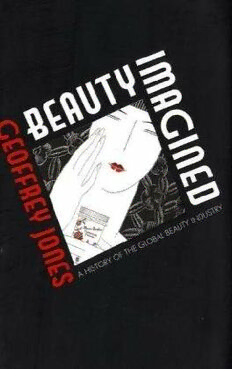
Beauty Imagined: A History of the Global Beauty Business PDF
427 Pages·2010·5.591 MB·English
Most books are stored in the elastic cloud where traffic is expensive. For this reason, we have a limit on daily download.
Preview Beauty Imagined: A History of the Global Beauty Business
Description:
The global beauty business permeates our lives, influencing how we perceive ourselves and what it is to be beautiful. The brands and firms which have shaped this industry, such as Avon, Coty, Est?e Lauder, L'Or?al, and Shiseido, have imagined beauty for us. This book provides the first authoritative history of the global beauty industry from its emergence in the nineteenth century to the present day, exploring how today's global giants grew. It shows how successive generations of entrepreneurs built brands which shaped perceptions of beauty, and the business organizations needed to market them. They democratized access to beauty products, once the privilege of elites, but they also defined the gender and ethnic borders of beauty, and its association with a handful of cities, notably Paris and later New York. The result was a homogenization of beauty ideals throughout the world. Today globalization is changing the beauty industry again; its impact can be seen in a range of competing strategies. Global brands have swept into China, Russia, and India, but at the same time, these brands are having to respond to a far greater diversity of cultures and lifestyles as new markets are opened up worldwide. In the twenty first century, beauty is again being re-imagined anew. Fast facts from the book: - Eug?ne Schueller, the founder of the world's biggest beauty company L'Or?al, invented the world's first safe synthetic hair dye after numerous experiments in his own kitchen, with the police being regularly called because of explosions. - Fran?ois Coty, one of France's greatest beauty entrepreneurs, got his perfume business started by smashing one of his bottles on the floor of a leading Parisian department store in a successful gambit to get customers to smell it. - Upon arrival to the U.S. in 1904, the Polish-born makeup artist Max Faktorowicz took the name given to him at Ellis Island: Max Factor. - The Communist regime of Mao Zedong banned the use of cosmetics in the 1970s, and visitors to China struggled to tell men from women. Today China is the world's fourth largest beauty market, with most leading Western brands sold as skin lighteners. - Anita Roddick established the first Body Shop in Brighton, England, to finance her husband's ambition to spend two years riding on horseback from Buenos Aires to New York City. - Perfume was drunk as a health drink right up to the nineteenth century, and men were as likely as women to use cosmetics. - By 1948, 90 percent of American women used lipstick and two-thirds used rouge.
See more
The list of books you might like
Most books are stored in the elastic cloud where traffic is expensive. For this reason, we have a limit on daily download.
